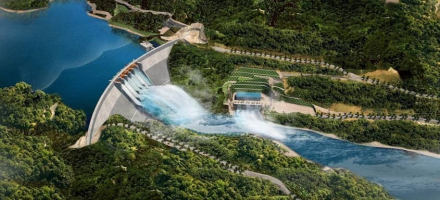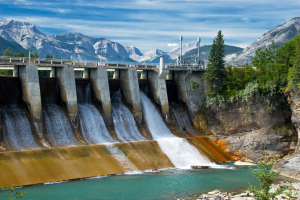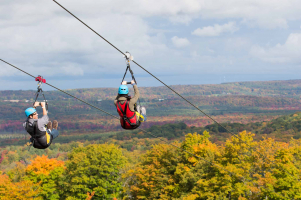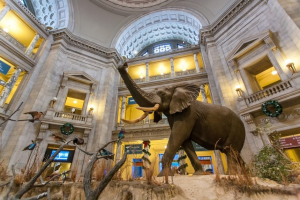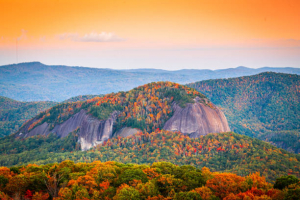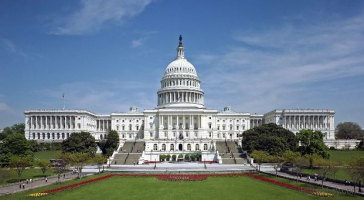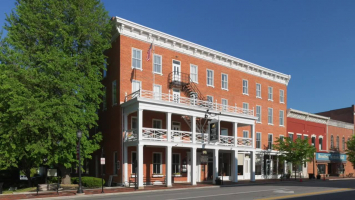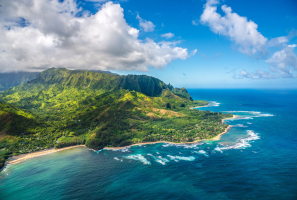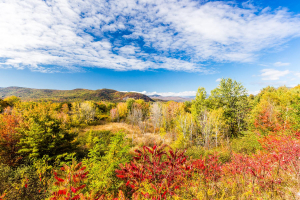Top 6 Biggest Hydroelectric Plants in America
Hydroelectric facilities are engineering marvels that generate electricity from water. Water rushes in, moving turbines that propel a metal shaft within a ... read more...generator. The generator then functions as a motor, producing electricity. These are the largest hydroelectric power stations in the United States, as shown below.
-
Grand Coulee Dam is a concrete gravity dam on the Columbia River in the U.S. state of Washington, built to produce hydroelectric power and provide irrigation water.
Constructed between 1933 and 1942, Grand Coulee originally had only two powerhouses. The third powerhouse ("Nat") was completed in 1974 to increase energy production, making it the largest power station in the United States by nameplate capacity at 6,809 MW. The Grand Coulee Dam is the largest man-made dam on the Columbia River in the United States. Congress approved the dam's construction in 1935 and it was completed in 1942.
Power from the dam fueled the growing industries of the Northwest United States during World War II. The dam's reservoir supplies water for the irrigation of 671,000 acres (2,700 km2) downstream.
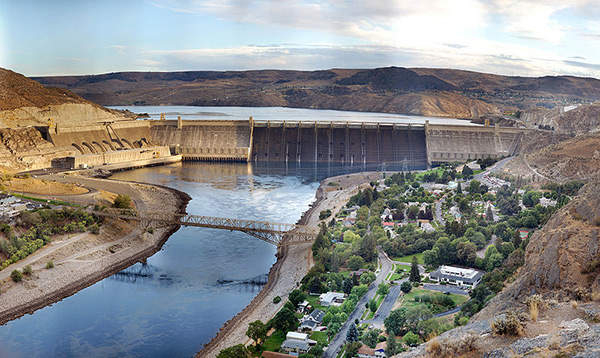
Grand Coulee Dam – Washington (photo: https://www.water-technology.net/) 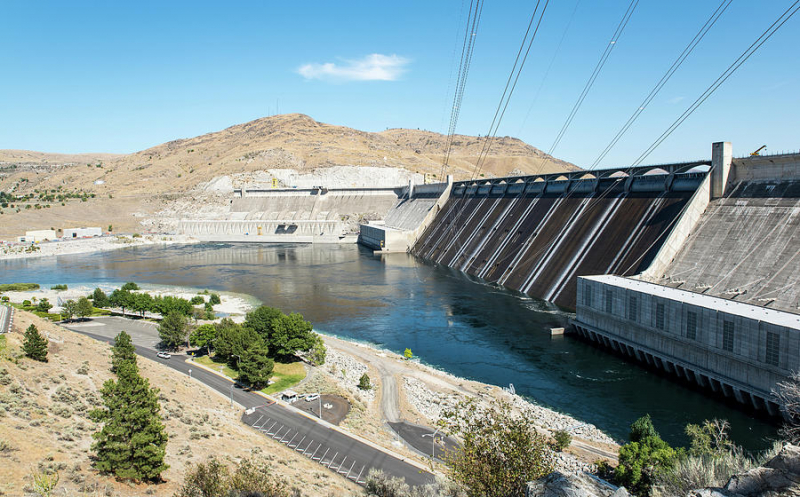
Grand Coulee Dam – Washington (photo: https://pixels.com/) -
The Bath County Pumped Storage Station is the largest pumped-storage hydroelectric power station in the world. It has a maximum generation capacity of 3,003 MW and a total storage capacity of 24,000 MWh.
The station is located in Bath County, Virginia, on the southeast side of the Eastern Continental Divide. It stores energy for PJM Interconnection, a regional transmission organization in 13 states and the District of Columbia.
The upper reservoir has a surface area of 265 acres (107 ha) and a storage capacity of 43,911,000 m3. The lower reservoir is 135 feet (41 m) high and 2,400 feet (730 m) in length. In times of drought, water quality can be maintained by using nearby recreational reservoirs.
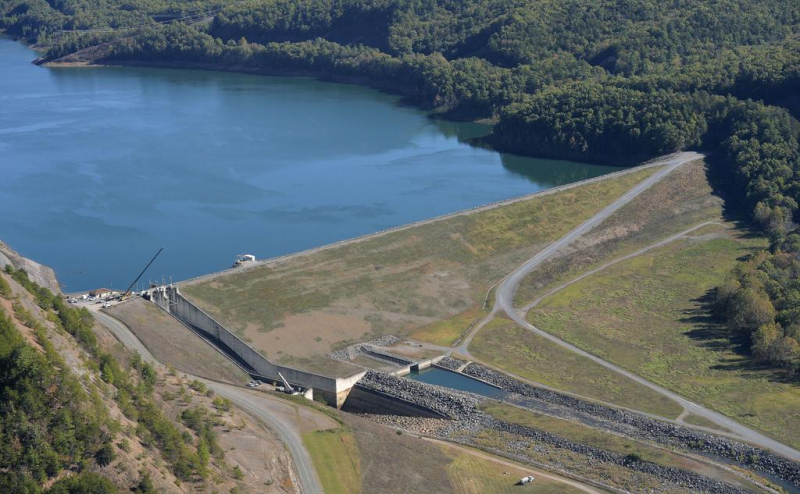
Bath County Pumped Storage Station – Virginia (photo: https://heraldcourier.com/) 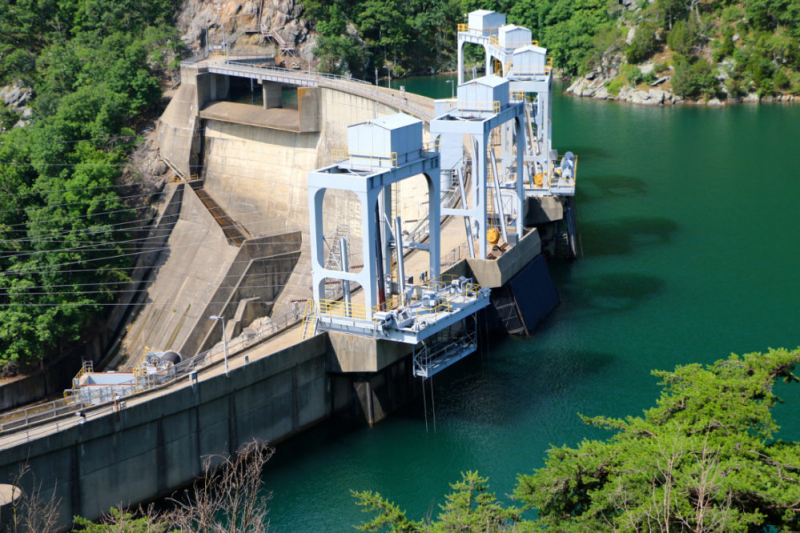
Bath County Pumped Storage Station – Virginia (photo: https://energynews.us/) -
Chief Joseph Dam is a run-of-the-river dam on the Columbia River, located 2.4 kilometers (1.5 miles) upstream from Bridgeport, Washington. It completely prevents salmon migration to the upper Columbia River system due to the lack of fish ladders. It is the third-largest hydroelectric power producer in the United States, with 27 main generators in the powerhouse and a hydraulic capacity of 6,030 m3/s.
Chief Joseph Dam is one of the largest hydroelectric projects in the United States. It was named after a Nez Perce chief who spent his last years in exile on the Colville Indian Reservation. Because of its lack of fish ladders, it completely blocks salmon migration to the upper Columbia River system.
Rufus Woods Lake, the reservoir behind the dam, extends 82 kilometers (51 miles) up the river channel. Bridgeport State Park, located on the lake, is close to the dam.
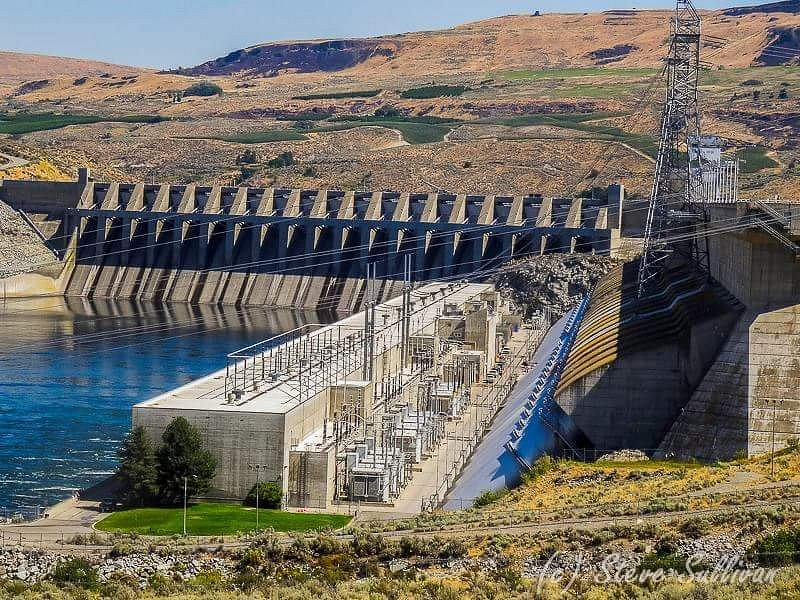
Chief Joseph Dam – Washington (photo: https://www.tripadvisor.com/) 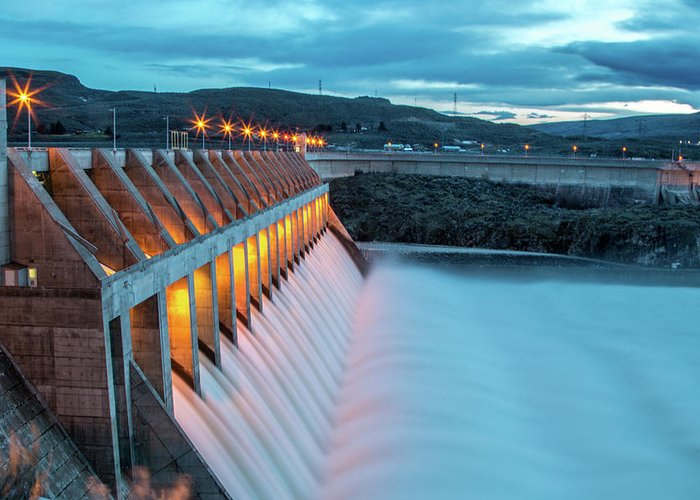
Chief Joseph Dam – Washington (photo: https://fineartamerica.com/) -
The Robert Moses Niagara Hydroelectric Power Plant is a hydroelectric power station located near Niagara Falls in Lewiston, New York. The New York Power Authority (NYPA) owns and operates the facility, which diverts water from the Niagara River above Niagara Falls and returns it to the lower stretch of the river near Lake Ontario. It employs 13 generators with a total installed capacity of 2,525 MW (3,386,000 hp).
The facility, named after New York City designer Robert Moses, was built to replace electricity production after the nearby Schoellkopf Power Station, a hydroelectric plant, collapsed in 1956. It is located in Niagara Falls, Ontario, Canada, across the river from the Sir Adam Beck Hydroelectric Power Stations.
The Niagara Power Visitors Center is located next to the Robert Moses plant and features an observation deck overlooking the Niagara Gorge. The Center has interactive exhibits about hydroelectricity and its history on the Niagara Frontier.
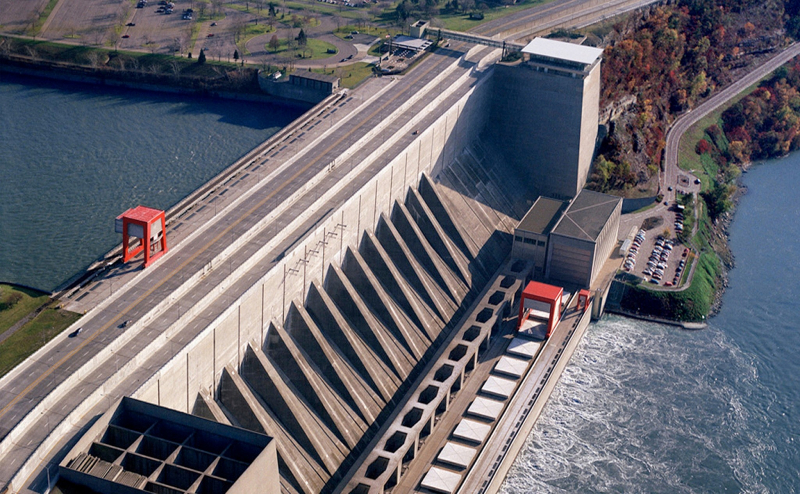
Robert Moses Niagara Power Plant – New York (photo: https://www.timesofisrael.com/) 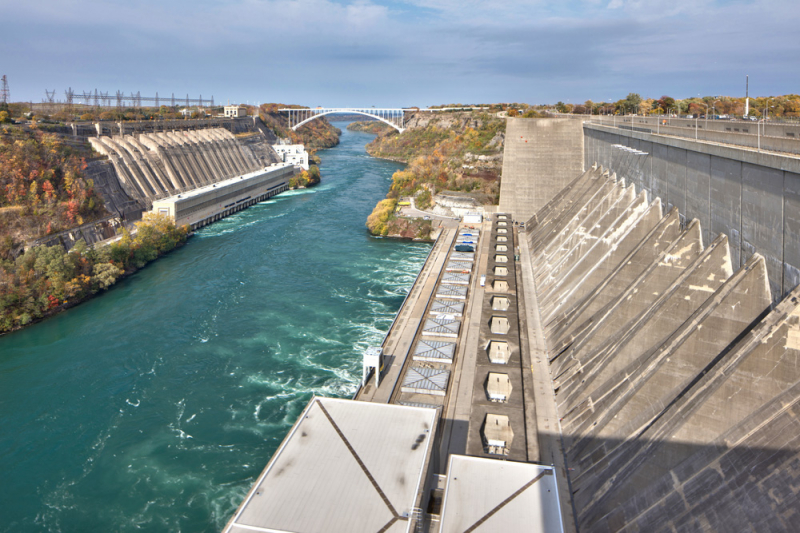
Robert Moses Niagara Power Plant – New York (photo: https://www.siennaet.com/) -
The John Day Dam is a concrete gravity run-of-the-river dam in the northwest United States that spans the Columbia River. The dam has a navigation lock as well as fish ladders on both sides.
The John Day Lock has the highest lift (110 feet) of any lock in the United States. Lake Umatilla is the reservoir created by the dam, and it extends 76.4 miles up the river channel to the foot of the McNary Dam. The John Day Dam is part of the Columbia River Basin dam system.
The John Day Dam lies 28 miles (45 kilometers) east of The Dalles, Oregon, and immediately below the mouth of the John Day River. Goldendale, 20 miles (32 kilometers) north, is the closest settlement on the Washington side. Rufus, Oregon is the closest town on the Oregon side. Its crest elevation is around 570 feet (170 meters) above sea level. It connects Sherman County, Oregon, with Klickitat County, Washington, 216 miles (348 kilometers) upstream from the Columbia River's mouth near Astoria, Oregon.
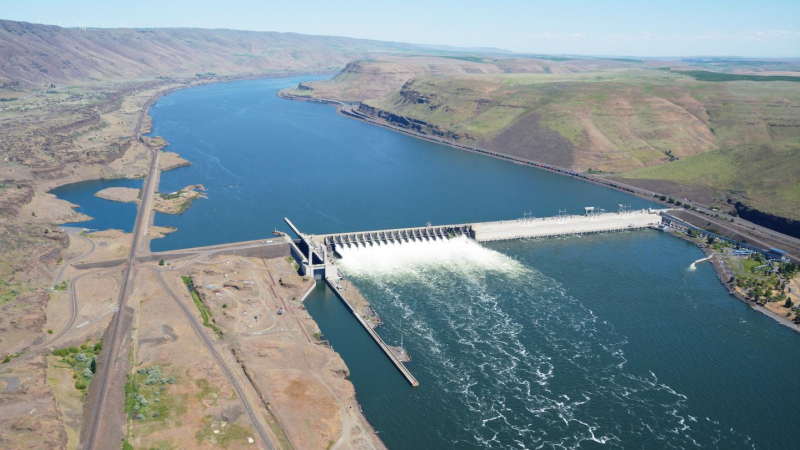
John Day Dam – Oregon/Washington (photo: https://www.recreation.gov/) 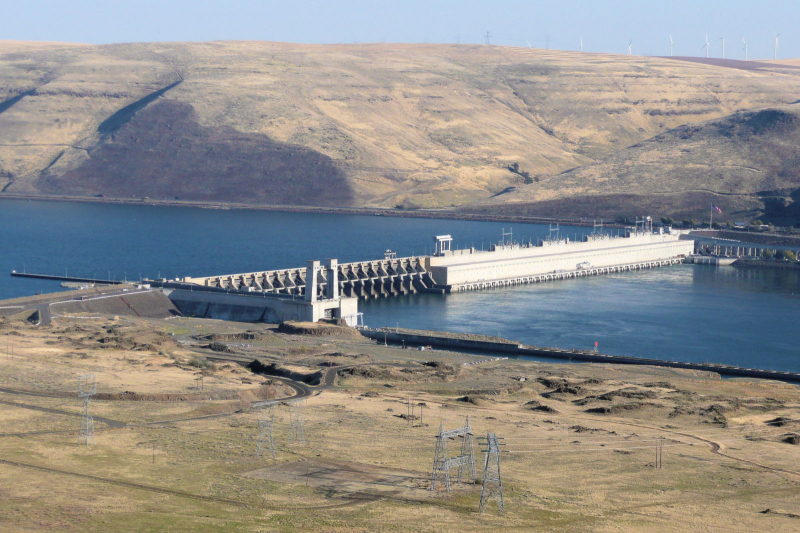
John Day Dam – Oregon/Washington (photo: https://www.recreation.gov/) -
Hoover Dam is a concrete arch-gravity dam in the Black Canyon of the Colorado River, on the border between the U.S. states of Nevada and Arizona. It was constructed between 1931 and 1936 during the Great Depression and was dedicated on September 30, 1935, by President Franklin D. Roosevelt. Construction was the result of a massive effort involving thousands of workers and cost over one hundred lives.
Since about 1900, the Black Canyon and nearby Boulder Canyon had been investigated for their potential to support a dam. In 1928, Congress authorized the project, and construction began in 1931. Such a large concrete structure had never been built before, and some of the techniques were unproven. The dam was finally completed in 1936, more than two years ahead of schedule.
The Hoover Dam impounds Lake Mead, the largest reservoir in the United States by volume when full. The dam's generators provide power for public and private utilities in Nevada, Arizona, and California. Hoover Dam is a major tourist attraction; nearly a million people tour the dam each year.
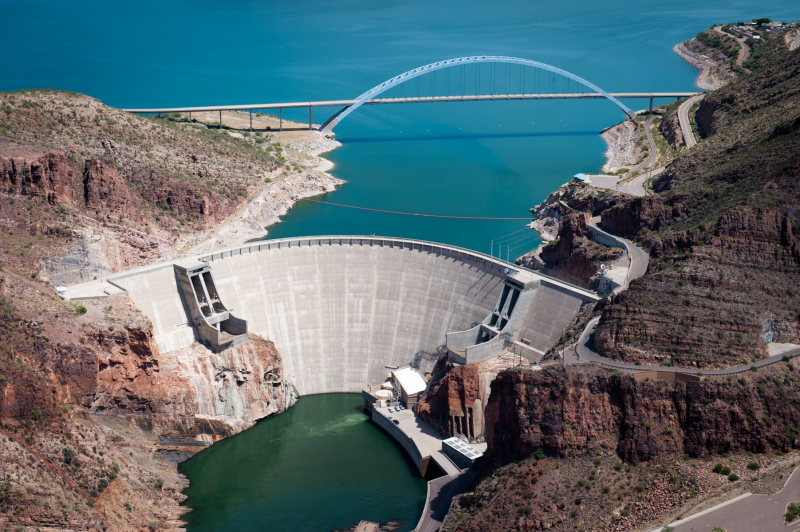
Hoover Dam – Nevada/Arizona (photo: https://twitter.com/) 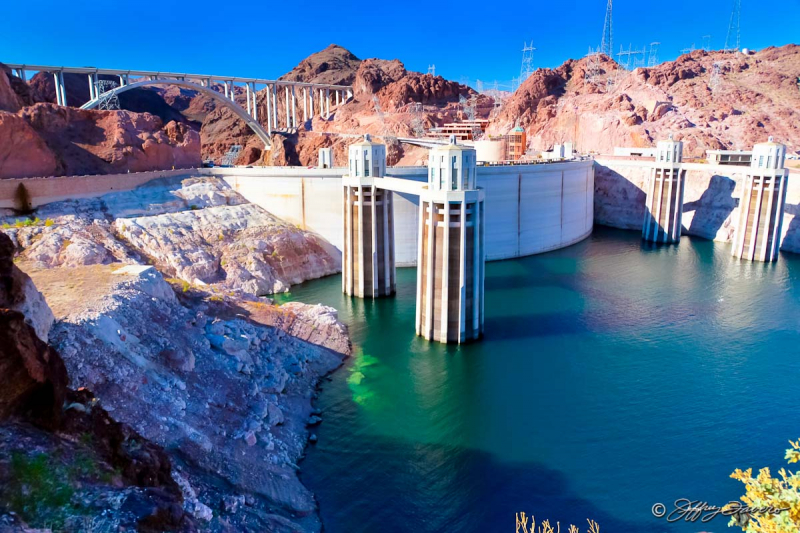
Hoover Dam – Nevada/Arizona (photo: https://jeffreyfavero.com/)








